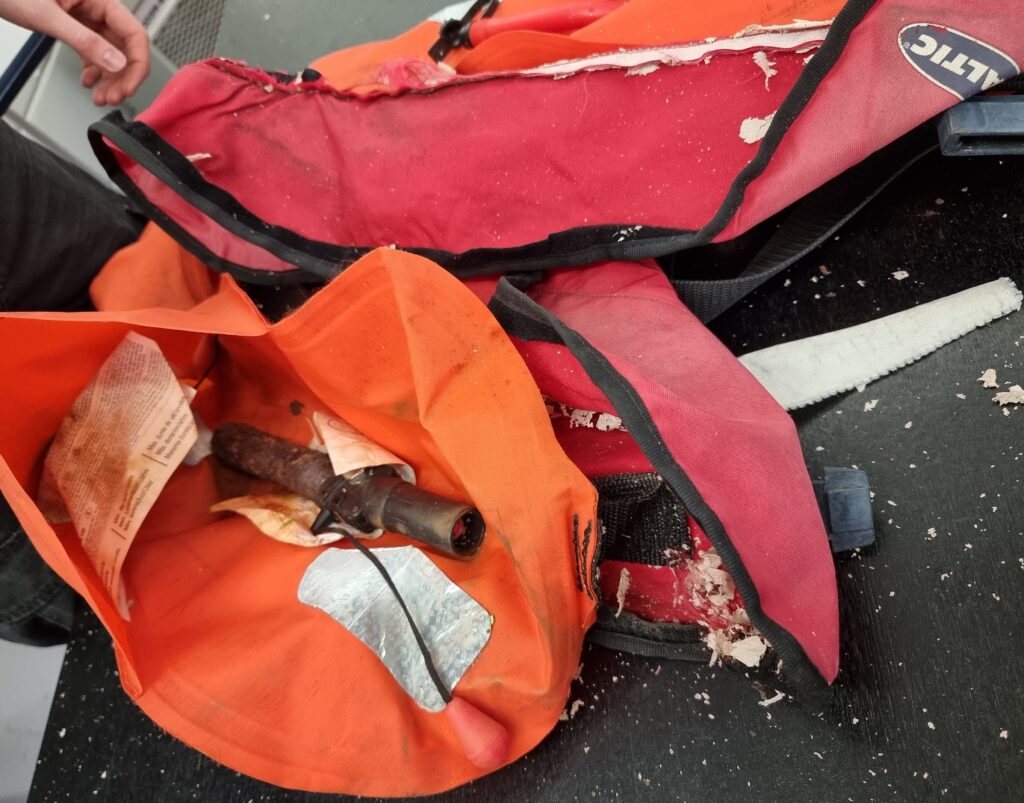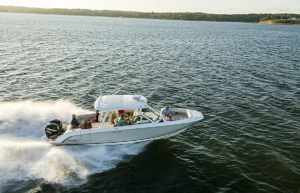RNLI lifejacket clinic finds over 50% are faulty or condemned
 Condemned lifejacket with corroded cylinder Credit: RNLI
Condemned lifejacket with corroded cylinder Credit: RNLI
A staggering 50 per cent of lifejackets examined by Fowey RNLI were faulty or condemned, according to a report from a recent lifejacket clinic held on the UK’s south coast.
The lifejacket clinic invited a team from Ocean Safety Ltd in Plymouth to carry out vital safety checks on a total of 169 lifejackets.
Over 50 per cent needed a critical safety part replacing, Fowey RNLI says, meaning if they had been used in an emergency they may not have worked and could potentially have caused loss of life. Eleven lifejackets were condemned outright as being unfit for use. A further 51 needed new capsules, and 26 required replacement cylinders, both of which are critical elements in a fully functioning lifejacket.
A donation to Fowey RNLI of £3 per lifejacket was suggested, and a total of £707.51 was raised on the day.
Fowey RNLI Lifeboat station operations manager, Chris Ogg says it is extremely important to have lifejackets or any personal floatation devices regularly checked and serviced.
“Your lifejacket may save your life one day, but only if you maintain it properly,” he says. “If a lifejacket is faulty, you are basically wearing a dead weight around your neck. People brought along a variety of lifejackets to be checked and it was eye-opening to see the terrible condition of some of them. One was so badly damaged inside, the material disintegrated when it was unpacked. Quite a few had heavily corroded CO2 bottles, out-of-date parts and damaged areas of material, meaning that they would have failed to inflate in an emergency.”

Ogg continues: “While it was encouraging to see a good turnout of local sailors and boat users, there will be many people who did not come along and who may not have had their lifejackets checked in the last couple of years. It is vital that they are checked and serviced once a year by the manufacturer or recommended agent.”
As well as carrying out safety checks, Ocean Safety also advised people on what danger signs to look out for. These signs include examining the webbing and the stitching that holds the webbing together, checking for signs of worn stitching and also checking zips, buckles, fastenings and crotch straps.
“Many people don’t appreciate that fabric is significantly affected by saltwater,” says Ogg. “If lifejackets have been stored in damp conditions, for example on boats, critical elements such as the salt tablets used to trigger the inflation will absorb moisture. Defects can be revealed by them being regularly opened and inspected, and through manual inflation. We hope this vital water safety message reaches everyone who uses lifejackets, especially as the 2022 sailing and boating season gets underway.”
Choosing the right lifejacket for the type of activity being undertaken can be the difference between life and death. TMS marine supplies from Par Moor was on hand all day to offer advice on the different types available and to assist with sales of new equipment to people whose lifejackets had been condemned or required new parts.
“I would like to thank Ocean Safety, TMS and all the volunteers who helped out on the day, including members of our volunteer lifeboat crew and local boat builder, Marcus Lewis,” says Ogg. “People were very grateful for the safety advice and service they received and we are delighted that the event raised £707.51 to support the running of Fowey lifeboat station.”











Could that be because people only brought in the lifejackets that they knew to be old / undependable so they could be checked out?